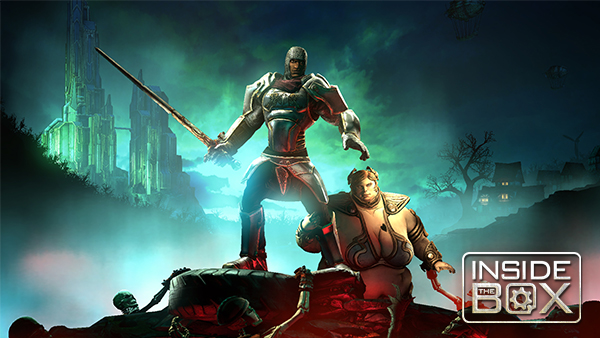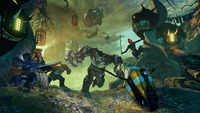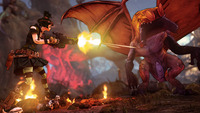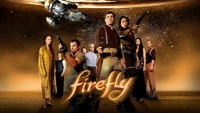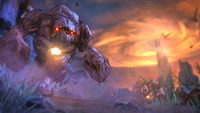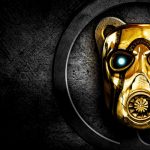Inside the Box serves as a forum for individuals involved in the production of Gearbox Software content to share personal motives, methods, process and results. Gearbox Software projects are created by a diverse range of individuals spanning a spectrum of different backgrounds, interests, objectives and world views. The views and opinions expressed in this article are those of the author and do not necessarily reflect the official policy or position of Gearbox Software or any of its individual members outside of the author.
Hi. I’m Anthony Burch, Lead Writer on Borderlands 2 and all of its DLC. Today I’m going to talk a little bit about Tiny Tina’s Assault on Dragon Keep, our new campaign DLC releasing June 25, but I’m mainly going to discuss the issue of Borderlands’s tone. Are we a comedy? An action game? Both? Can we ever be too goofy, or too serious? Where do the boundaries lie? I’ll try to give some answers to these questions.
Tiny Tina’s Assault on Dragon Keep is about a group of friends – Tina, Brick, Lilith, and Mordecai – playing a tabletop roleplaying game. As the player, you fight through Tina’s fantasy module as it exists in her imagination – this means that you get to fight orcs, skeletons, dwarves, and all other kinds of fantasy-centric stuff that wouldn’t make sense in the universe of Pandora. It also means that your explicit goal in the plot is relatively simple (and in honesty, sort of cliché): you’ve got to track down the evil Handsome Sorcerer who brought darkness to the land, and rescue the beautiful Queen of Flamerock Refuge from his evil clutches.
WARNING: THE EVENTS OF BORDERLANDS 2 ARE DISCUSSED BELOW
SPOILERS AHOY
However, that’s not the only plot in the game. While your quest to kill the Handsome Sorcerer takes center stage in the actual game world, Assault on Dragon Keep includes a second, considerably darker story: that of Tina dealing with the deaths of Roland and Bloodwing. Long story short: when the DLC starts, Tina is in denial about what happened to Roland and Bloodwing. By playing the game and bonding with her friends, Tina tries to come to grips with the fact that some of her loved ones aren’t coming back.
So, yeah. That’s, uh – that’s kind of heavy stuff, especially for a game with sidequests about crumpets and Game of Thrones references. It shouldn’t seem all that unusual, though: Borderlands 2, as well as its predecessor, are chock-full of tragedy/comedy juxtapositions.
In Borderlands 1, for instance, Scooter promises to murder Lucky Zaford for “messin’ up his momma’s girly parts.” Surprisingly, he does exactly that during The Secret Armory of General Knoxx – it would have been the easiest thing in the world for Mikey Neumann (Co-Writer of BL1 and Writer of the Zombie Island and Knoxx DLCs, as well as additional writing for BL2) to just leave Scooter an amiable, non-murderous chum, but he didn’t – he made Scooter a cold-blooded murderer, and then still asked you to have laugh along with him.
This, in essence, is Borderlands’s tone. We want the game to be a little funny, because the mechanics are inherently kind of funny (you can’t not laugh when you knock a Goliath’s helmet off, then let him kill five people and turn into a GOD-liath, then melt him into nothingness with a shotgun that shoots lightning bolts). But we also want the game to be a little dark, because it takes place in a universe defined by its harshness and insanity (see: Tannis’s audio logs in BL1, the fact that 90% of the human enemies in both games are normal people who were driven to madness).
Sometimes, people tell me that they love Borderlands because, to paraphrase, “it’s a universe where anything goes.” Well, that’s not quite true. There are definitely boundaries. We’ll never get as serious as, say, Silent Hill 2 – Paul Hellquist (Borderlands 2 Creative Director and Lead Designer) nixed my idea for an alternate ending to Borderlands 2 where you drive your car into a lake and die a lonely death by drowning – but we’ll also never be as hilariously apeshit as the dildo-bat laughpocalypse that is Saints Row The Third (a game I adore).
Instead, we try to keep a kind of lopsided balance between humor and tragedy. Anything that gets too goofy should have something to give it a little bit of darkness and weight. For instance, the “You Are Cordially Invited” mission in Borderlands 2: it’s pure Alice in Wonderland wackiness for the most part, tasking you with killing bandits to protect a “tea party” where Tiny Tina tortures an evil bandit named Fleshstick for kicks. It’s over-the-top and, while violent, played pretty much for laughs. That is, until you find out why Tina is torturing Fleshstick: he sold Tina’s parents out to Hyperion, and she had to watch them get tortured to death in front of her (which subsequently shattered her mind and turned her into the person she is now).
Conversely, anytime anything might get too heavy, we try to add something darkly humorous in to take the edge off a bit and make it clear that we aren’t taking ourselves too seriously. In a Borderlands 2 sidequest entitled, “Handsome Jack Here,” the player finds a series of audio logs chronicling Helena Pierce’s death at the hands of the game’s antagonist. At one point, Jack shoots Pierce in the head, causing all of the soon-to-be-dead refugees under her care to scream in terror. It’s a fairly dark moment, but hopefully Jack’s follow-up comment – “oh man, did you see the way her head exploded? It was like *PFFFHHHBSHHT*” – transforms the quest from an ultimate downer into an admittedly sinister bit of dark comedy. And if that doesn’t lighten the tone enough, then don’t worry: about ten minutes after turning that quest in, you’ll hear Jack introduce you to Butt Stallion (a living pony made of diamonds). If you were at all worried that Borderlands 2 was going to be a serious drama, Butt Stallion will hopefully disabuse you of that notion.
I think, as I often do, of Firefly and Serenity. In Firefly, the situations are pretty grim and serious (“Oh crap, we’re going to die of oxygen deprivation!” “Oh crap, a bounty hunter is going to kill us in our sleep!” “Oh crap, cannibals!”), but the characters still crack jokes and keep things light. Through comedy, you come to greatly care about the crew – they’re not just a bunch of dudes, they’re characters who have made you laugh and are fun to be around. This ensures that when thinks get really bad and characters start dying, you feel the impact of those moments even more than you would have if the show had simply played it straight the whole time through.
Really, the “leaf on the wind” moment in Serenity — is a great example of the kind of tone we generally want for Borderlands stuff. In the span of five seconds, you go from, “YE GODS, THIS IS EPIC,” to, “haha, he’s saying he’s a leaf on the wind, what a goof,” to, “OH GOD WHYYYY-Y-Y-Y”. And to me, that’s incredibly cool.
Now, we’ve read some feedback that this tone is a bit inconsistent – that the funny stuff can sabotage the serious stuff, and vice-versa. And to be completely honest, I understand that critique – because Borderlands 2 is a fairly nonlinear game that allows you to do quests at your own pace, you could complete “Shoot This Guy In The Face” less than ten minutes before watching the big, tragic climax of “Where Angels Fear to Tread”. And I can’t blame anyone for finding that a little weird.
But on the other hand…if that’s the worst problem with our tone, is that really so bad? No other game franchise dabbles in both the turbo-goofy and the turbo-dark in the way that Borderlands does. When we started work on Tiny Tina’s Assault on Dragon Keep, I think we unconsciously decided that instead of removing that tonal dissonance, we should embrace it. Why not make a DLC that’s about both the stages of grief, and punching people so hard they explode? If we do it well, we might make you laugh, then feel somber. If we screw it up? Well, at least we’re not being predictable. That’s gotta count for something.
Anyway, I could talk about this topic for a hundred pages. I hope you enjoyed my ramblings about it.


